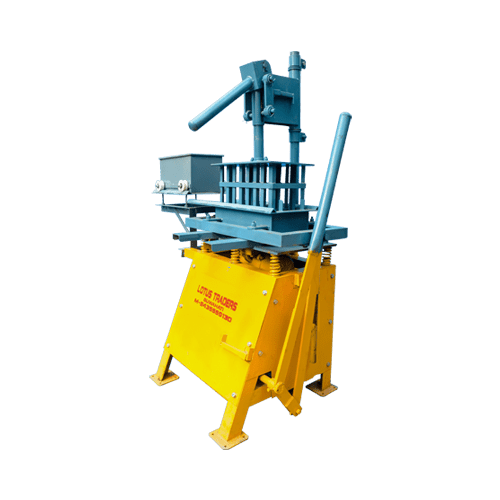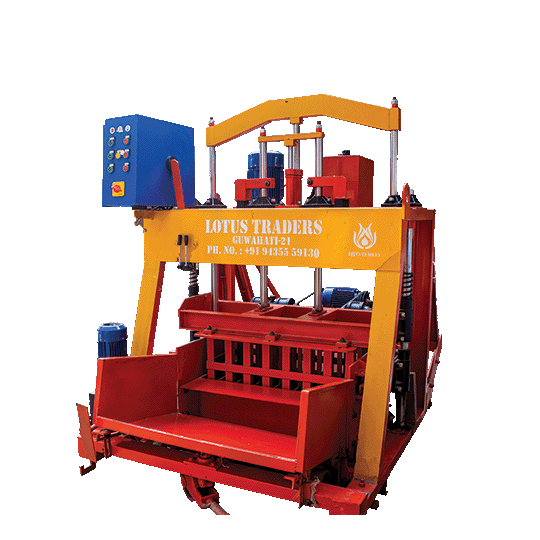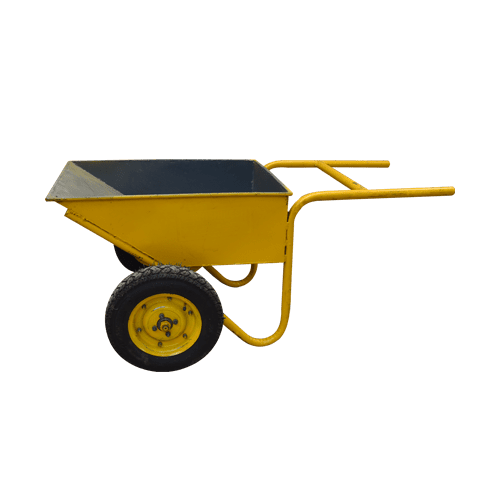GI Sieves
- High Quality Materials
- Compliance With Standards
- Clear Product Information
- Warranty & Support
- Product Testing & Certification
- Delivery & Policy
- Ask a Question
- Estimated Delivery: 5 Days – 10 Days
Information About GI Sieves:
GI sieves:
GI sieves or Galvanized Iron sieves have an important position in different industries processes especially particle separation and size classification. The designs of these sieves are made from high-quality galvanized iron which is selected for its corrosion resistance and longevity.
The process of galvanizing involves the iron being lined with an anti-corrosive coating made out of zinc, thus prolonging its lifespan and rendering it immune to rust; hence GI sieves can be safely used in any environment for a long period.GI sieves are precise engineering designs recognizable for their mesh structure that filters particles with high accuracy according to size. The aperture size of the mesh can vary, and it is adjustable for specific uses.
These sieves are widely used in industries like agriculture, pharmaceuticals and mining where they play a significant role as tools of quality control to ensure uniformity in the product specifications. Sturdy GI sieves resist undesirable situations and produce the same good results regardless of time. They can also be used in other fields such as soil analysis, where particle size distribution is important when testing for fertility and composition.
They are also being used in food processing where separation of particles with different sizes plays a major role for the quality of the product. In summary, GI sieves are essential instruments in sectors that demand precise particle separation. The galvanized iron construction coupled with the detailed design makes them reliable instruments for various purposes where they help in ensuring high efficiencies and qualities of different manufacturing processes.
KEY FEATURES
Gas-liquid chromatography (GLC) is used to separate and analyse volatile compounds in different areas of study that includes chemistry, environmental science, pharmaceuticals among others. Gas-liquid chromatography makes use of a column filled with stationary phase that is often called gas liquid interface GI sieve. This analytical technique distinguishes GI sieves by several key features.
Stationary Phase Diversity: GI sieves have a large selection of stationary phase options and analysts can choose according to the particular properties that it will help in separating. This diversity makes gas-liquid chromatography versatile.
Temperature Control: GI sieves operate under very specific temperature. This feature is important for the optimization of separation efficiency and resolution because it impacts volatility and analytes’ interaction with the stationary phase.
Column Length and Diameter: The separation efficiency and rate of analysis depend on the size and diameter of column holding GI sieve. Selecting an appropriate dimension of the column is crucial for obtaining good chromatographic results.
Film Thickness: GI sieves have different variations in the thickness of film i.e., the stationary phase covering this column. This is an important parameter in method development as it affects the column’s ability to separate different compounds.
Inertness and Reproducibility: GI sieves have inert nature meaning that the impacts on analytes are minimal leading to accurate results. They also show a high reproducibility, which is important for reliable and consistent chromatographic analyses.
To conclude, the most essential features of gas-liquid chromatography sieves make the method quite versatile accurate and dependable in separating different volatile compounds from a wide range of applications.
UNDERSTANDING THE WORKING PROCEDURE
Evaluating the size of grains. A typical method used in geotechnical and civil engineering to determine how particles are distributed within a soil sample is sieve analysis, which frequently refers grain sizing using sieves. This procedure is meant to pass a sample through stacked sieves with successively smaller openings. First, a representative soil sample is taken and dried in an oven to ensure correct measurements.
The sieves are generally woven wire mesh or perforated plate arranged with the coarsest sieve at top. The soil sample is set on the uppermost sieve, and all stacked ones are mechanically shaken or hand rubbed. In this process finer particles go through the opening of the sieves and larger ones stay on each one successive. After a certain period of vibration, the material that remained on each sieve was checked and weighed carefully.
This data is then used to calculate the amount of soil retained in each sieve and this determines the cumulative distribution curve as well a specific grain size distribution. The results obtained from the sieve analysis play an important role in determining engineering properties of soil including permeability, compaction characteristics and shear strength. This information helps engineers and geologists to make evaluations about a soil’s suitability for construction works, foundation design or other engineering applications relating generally with matters of the earth.
To summarize the working principles of GI sieves, one need to mention that they consist of different sieves with various mesh sizes arranged in a certain way; soil sample is introduced there and shaken so particles are separated depending on their size. The quantitative analysis of the material retained gives very insightful information on composition and characteristics related to soil.
USAGE AND APPLICATION
Granulometric analysis with GI sieves is an important approach in different industries, such as constructional, agronomic and materials engineering. These sieves are in accordance with the guidelines established by the Geotechnical Investigation (GI) industry used to ascertain soil and aggregates’ particle size distribution. In the construction industry, GI sieves are important in gauging how well soils can be used to make foundations for buildings.
By determining the size distribution of particles, engineers would be able to distinguish soils according grading this process helps in choosing a suitable construction material. This provides the best compaction and stability in structures.GI sieves are used in agriculture to assess soil composition for farming. Knowledge about distribution of soil particles helps the farmers in making informed choices regarding plantation, irrigation procedures and methods to improve the quality of soils. This leads to higher agricultural productivity and sustainable farming.
Also, in the field of materials engineering GI sieves are used to determine aggregate gradation for concrete production. The distribution of particle sizes directly affects concrete strength and durability. Granulometric analysis enables engineers to properly optimize the mix design so that concrete can meet standard requirements for various applications in construction. Granulometric analysis using GI sieves also improves the transportation industry. Before using road construction materials like crushed stones and gravel, their particle size distribution is subjected to a rigorous test.
This assists in the creation of road surfaces that can hold up to traffic loads’ stresses, which guarantees durability and safe passage. In conclusion, the GI sieves have a wide area of application in granulometric analysis that includes construction, agriculture, materials engineering and transportation. Other than making informed choices in various sectors, this method is key to enhancing efficiency and sustainability while ensuring safety within multiple applications.
ADVANTAGE AND BENEFIT
GI sieves, Geographically Indicated ones have a unique advantage in different industries especially when it comes to materials sorting and classification. One important advantage is their ability to improve precision and accuracy during the sieving process. Incorporation of geographic indicators within these sieves enables a more customized approach to sorting materials by origin or attributes uniquely associated with specific locations. Additionally, GI sieves enable quality control by allowing only materials that meet particular criteria to get into the final product.
Such a level of refinement results in enhanced product consistency and reliability. This characteristic is especially useful for industries like agriculture and mining where they can benefit from being able to mine materials or process them more efficiently.GI sieves have another benefit, which makes them sustainable. This specific approach minimizes the burden production processes place on the environment in accordance with today’s sustainability standards. Moreover, GI sieves help to meet regional standards and regulations.
Their capacity to separate materials based on certain geographically identifiable features guarantees that products satisfy the requirements of local authorities and contribute towards compliance with industry norms which in turn improves product acceptability. In summary, the use of geographic indicators in sieves provides precision quality control sustainability and regulation compliance.
GI sieves are thus valuable tools in various industries because they make material processing more efficient and responsible with these inherent advantages.
Granular activated carbon is a highly porous material that uses the process adsorption to remove impurities from water. GAC sieves catch and adsorb contaminants, including organic chemicals and chlorine, making water pure.
GAC should be stored in a dry, well-ventilated area to avoid the adsorption capacity from being affected.
GAC can be a sustainable solution to water treatment issues; however, proper disposal techniques must also take place considering the potential for retaining contaminants.
Flow rate, contact time, GAC particle size and type of impurities present can affect the effectiveness of GAC.
GAC mainly focuses on organic compounds and is not meant for microbial removal. Possibly, complementary disinfection techniques are needed. Yes, GACs are available in many different forms each with particular characteristics suitable for a wide range of water treatment functions.
GAC mainly focuses on organic compounds and is not meant for microbial removal. Possibly, complementary disinfection techniques are needed. Yes, GACs are available in many different forms each with particular characteristics suitable for a wide range of water treatment functions.
The GAC is effective in removing various types of impurities such as volatile organic compounds VOCs, taste and Odor compounds, and some heavy metals. How often should the GAC sieves be changed? The frequency of replacement depends on the quality and type of water being treated. The replacement intervals should be determined via regular monitoring.














